Scientists Excited As Muldrow Glacier In Alaska Surges Downhill For First Time In 64 Years
Glaciers are famous for moving at a notoriously slow pace as they either expand or shrink – but scientists have now revealed that occasionally even glaciers are known for their ability to move fast.
It is extremely rare, but it does happen and when it occurs it is known as ‘surging’, and now the experts have revealed that one of the most famous glaciers in the world is finally surging for the first time in 64 years.
The Muldrow Glacier located in the Denali National Park and Preserve in the US state of Alaska originates from the Great Icefall of Harper Glacier on the east side of Denali, the highest mountain peak in North America.
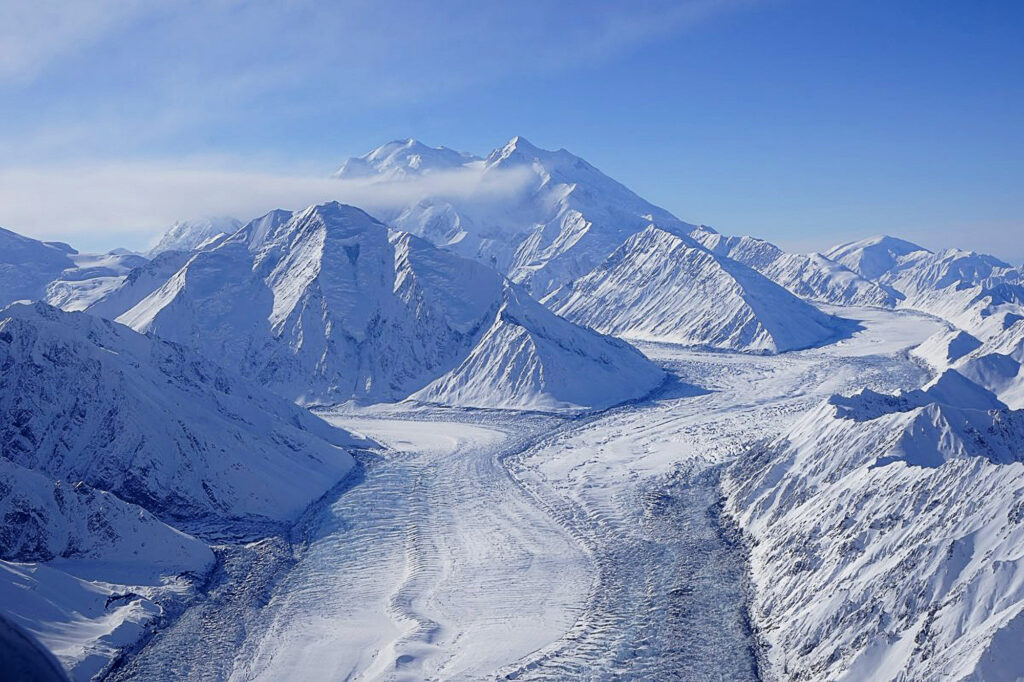
The glacier generally moves eastwards, receiving Traleika Glacier and Brooks Glacier as tributaries, and as mentioned it has not surged in over six decades.
Glacial surges as opposed to the normal movement of a glacier are short-lived events where they advance at a great rate, sometimes moving at speeds up to 100 times faster than normal.
Chris Palms, who works for K2 Aviation, a company that is affiliated with the National Park Service, was flying on the north side of Denali when he noticed unusual activity on the Muldrow Glacier on 4th March.
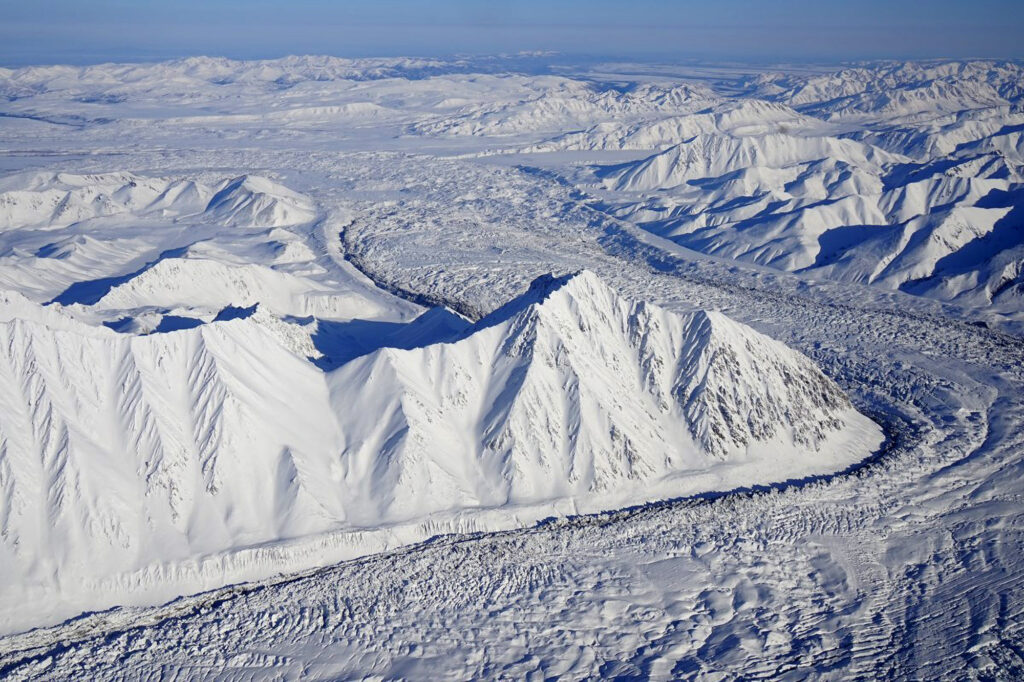
National park scientists were immediately alerted by Palms and after studying the images he took, it was clear that this normally slow-moving glacier had started its long-awaited surge.
Cracks and crevices stretched along the length of the glacier, signalling that the Muldrow Glacier’s increased movement rate.
National park spokesperson Guy Adema told local media outlet Alaska Business: “It’s a spectacle of nature, and especially interesting because it’s rare to have this kind of event on such a historically prominent glacier that is a centrepiece of Alaskan visitation.”
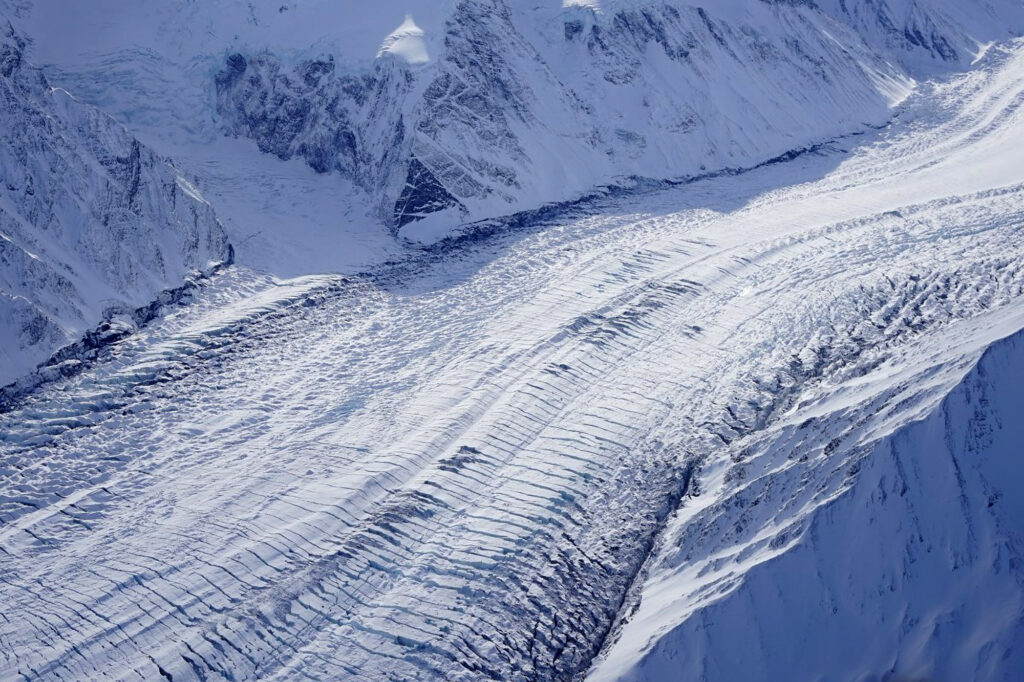
The last surge of the 63-kilometre-long Muldrow Glacier, which extends from the north-eastern slope of Denali to the McKinley River, occurred between 1956 and 57 when it advanced about 6.5 kilometres.
Scientists have been predicting the current surge for some time, but no one knew when it would occur.
Since the 1990s, they have been gathering baseline data to better understand the glacier’s behaviour during its dormant time.
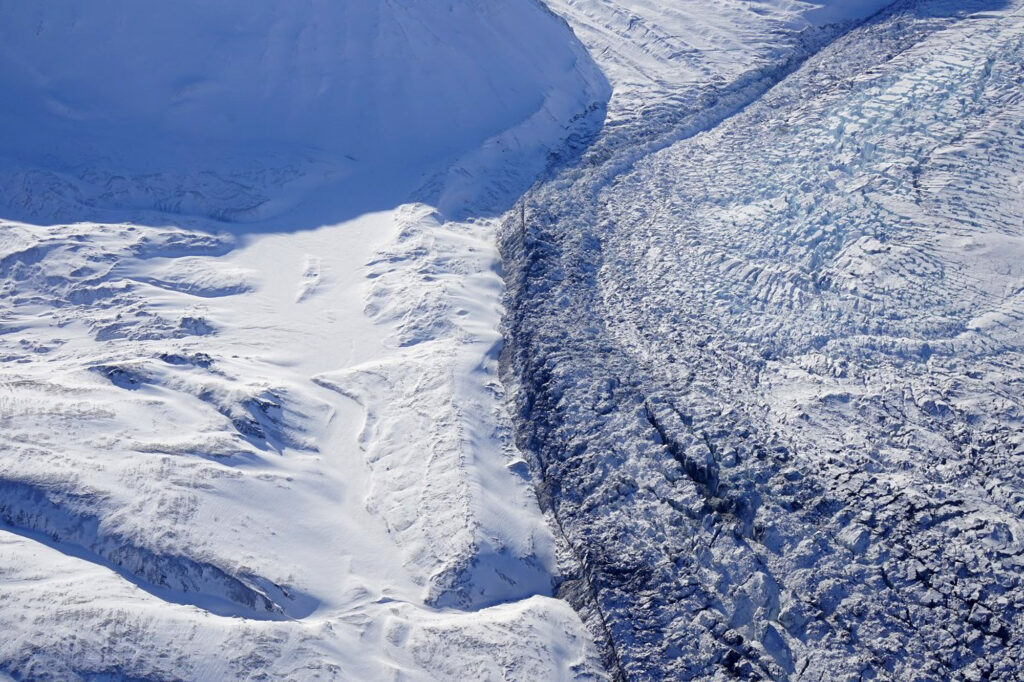
According to satellite and aerial images, the Muldrow is flowing at a rate of 10 to 20 metres per day, which is 50 to 100 times higher than the previous 60-year flow rate of 0.16 to 0.25 metres per day.
Two GPS units that will record positions every 30 seconds were placed on the glacier on 28th March, capable of tracking vertical and horizontal shifts.
Scientists hope to capture the glacier’s exact movements during the surge and how it will eventually end.
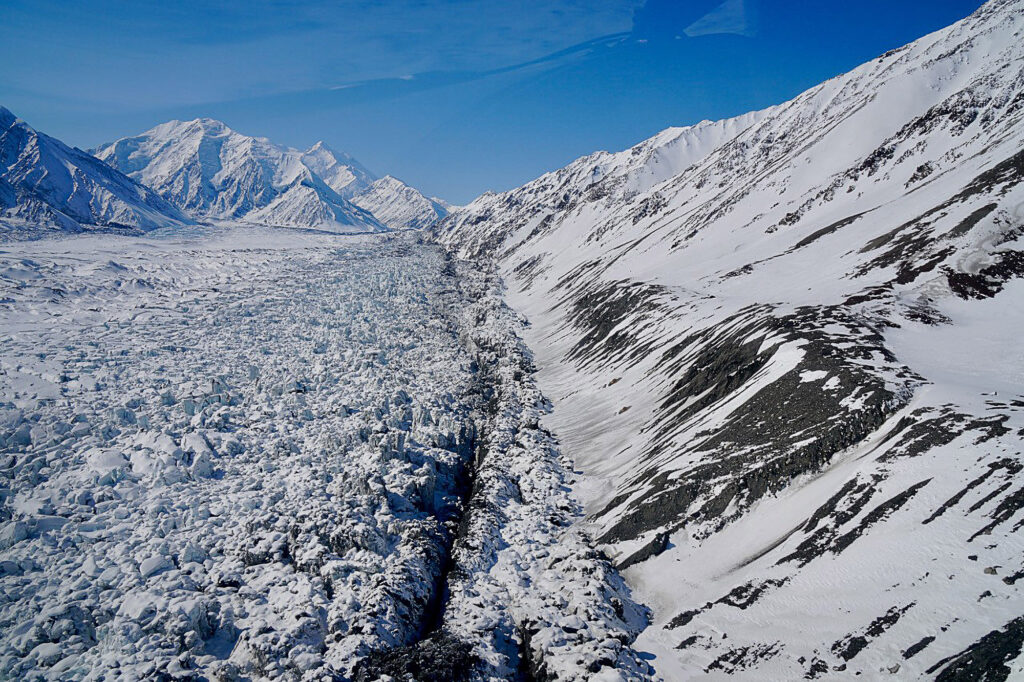
Previous research discovered that glacier surges can come to a halt unexpectedly, often in a matter of hours or days, and are typically accompanied by a dramatic and potentially dangerous flood.
The Denali National Park and Preserve said on Facebook: “Glacial surges like this don’t last very long, and scientists are now racing to document this rare geologic event before it ends.
“Interestingly, surges like this have very little to do with climate change. Rather, they occur due to the unique geomorphology of the glacier and the rocks it is moving over.
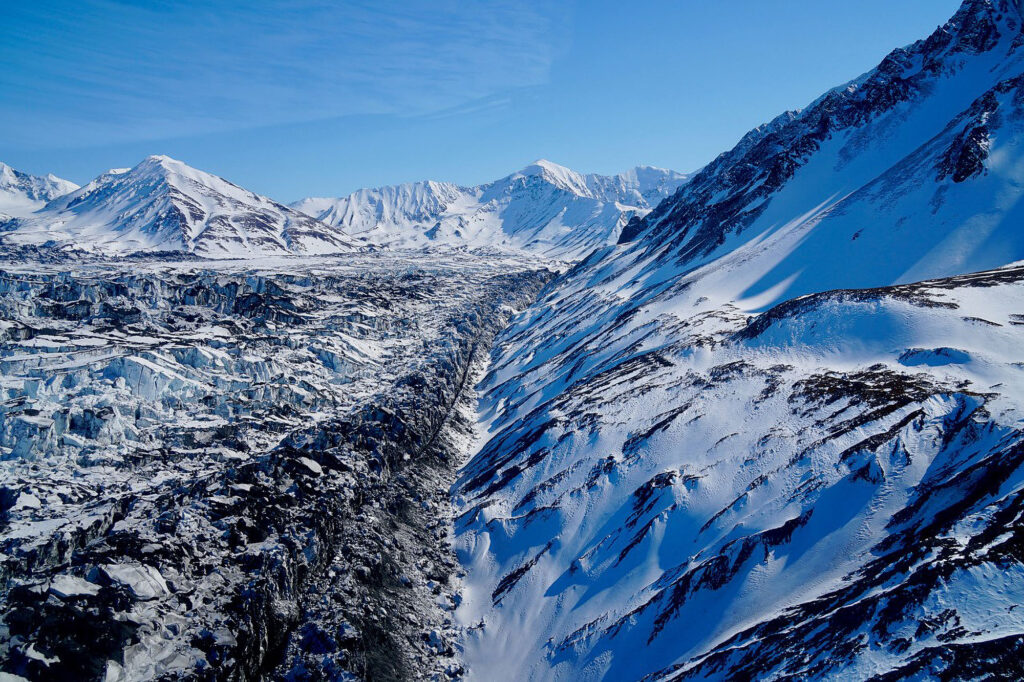
“Only about 1 percent of the world’s glaciers experience surges of this kind. The fact it’s happening with one of Denali’s most well known and visible glaciers makes it even more remarkable!”



